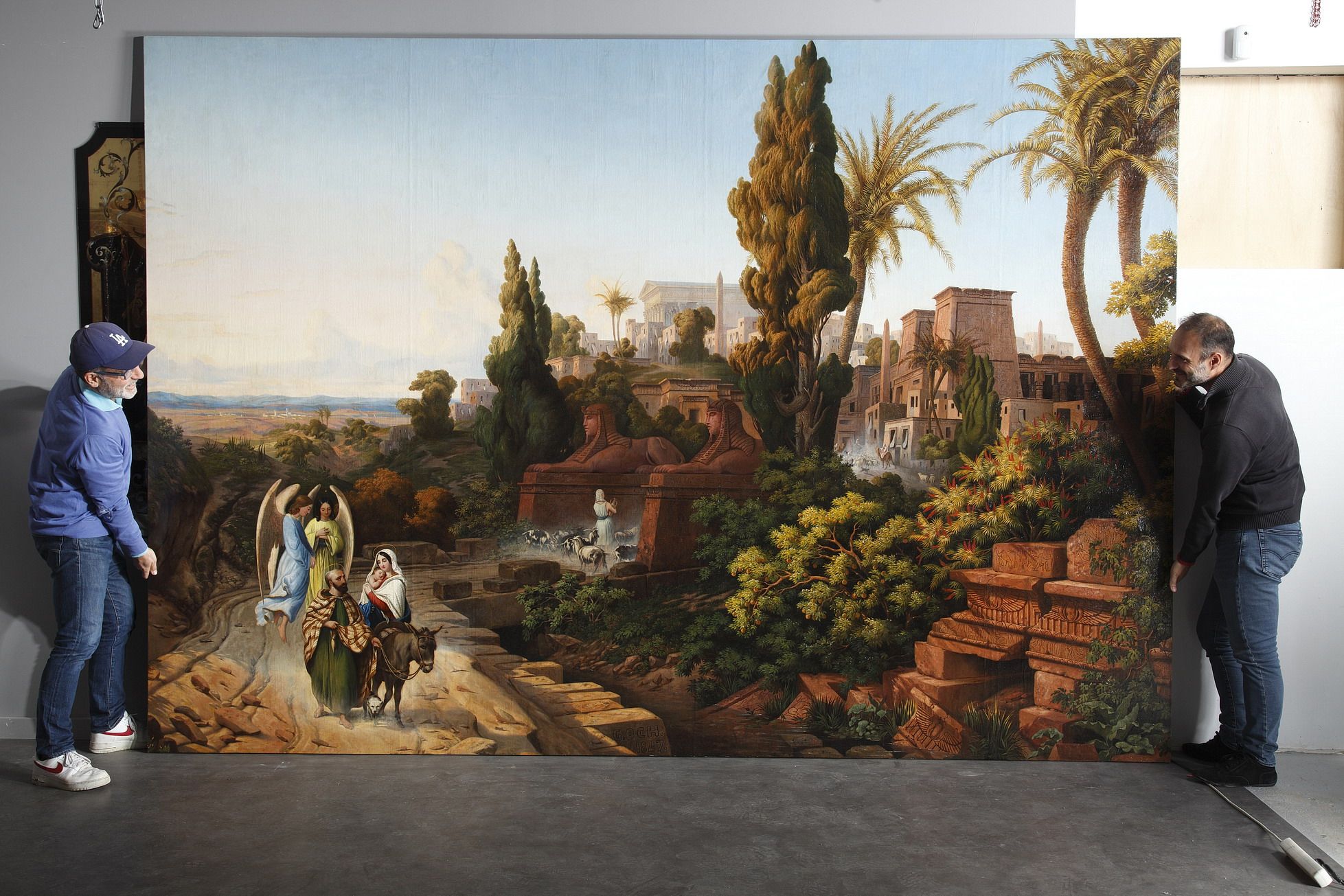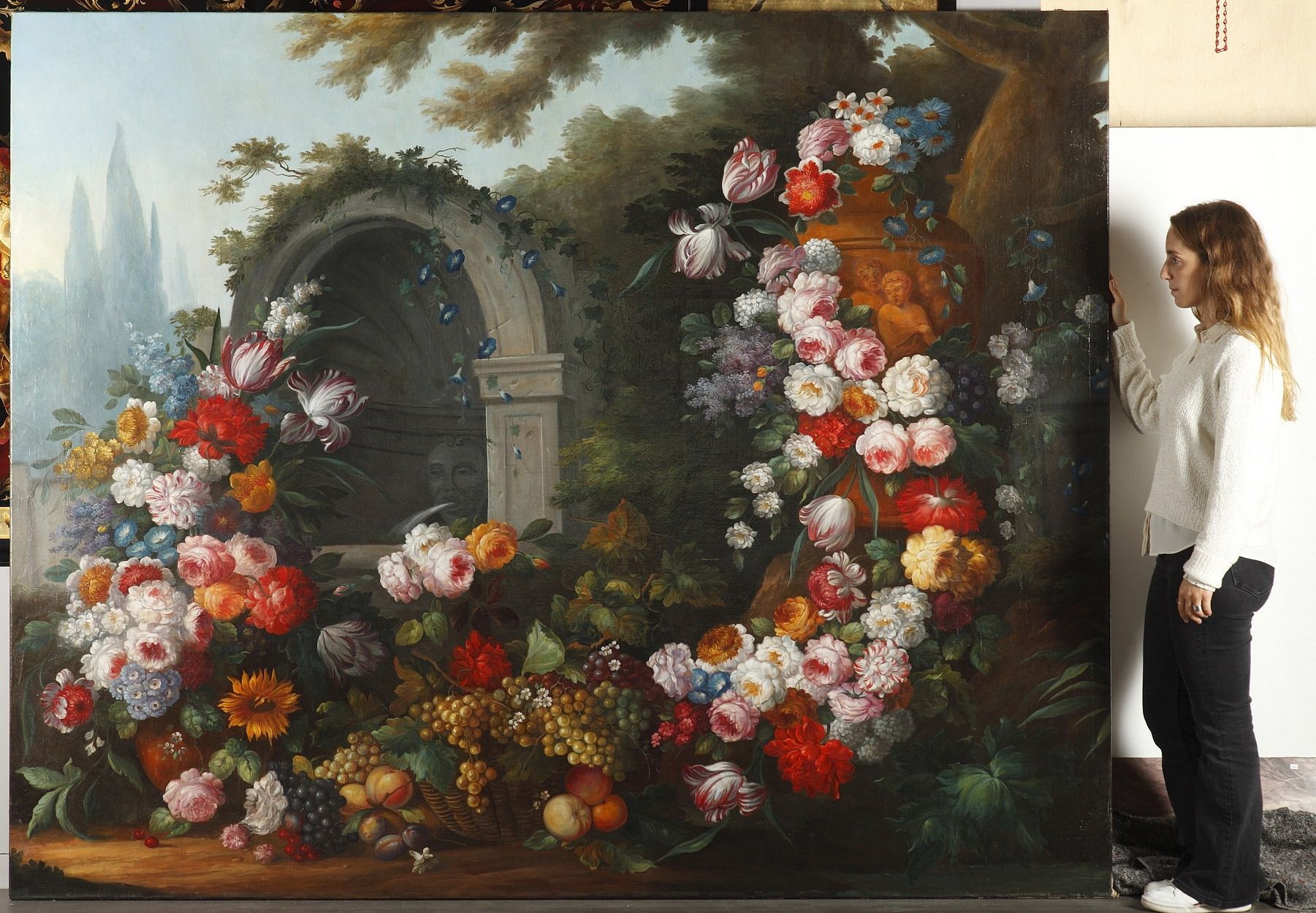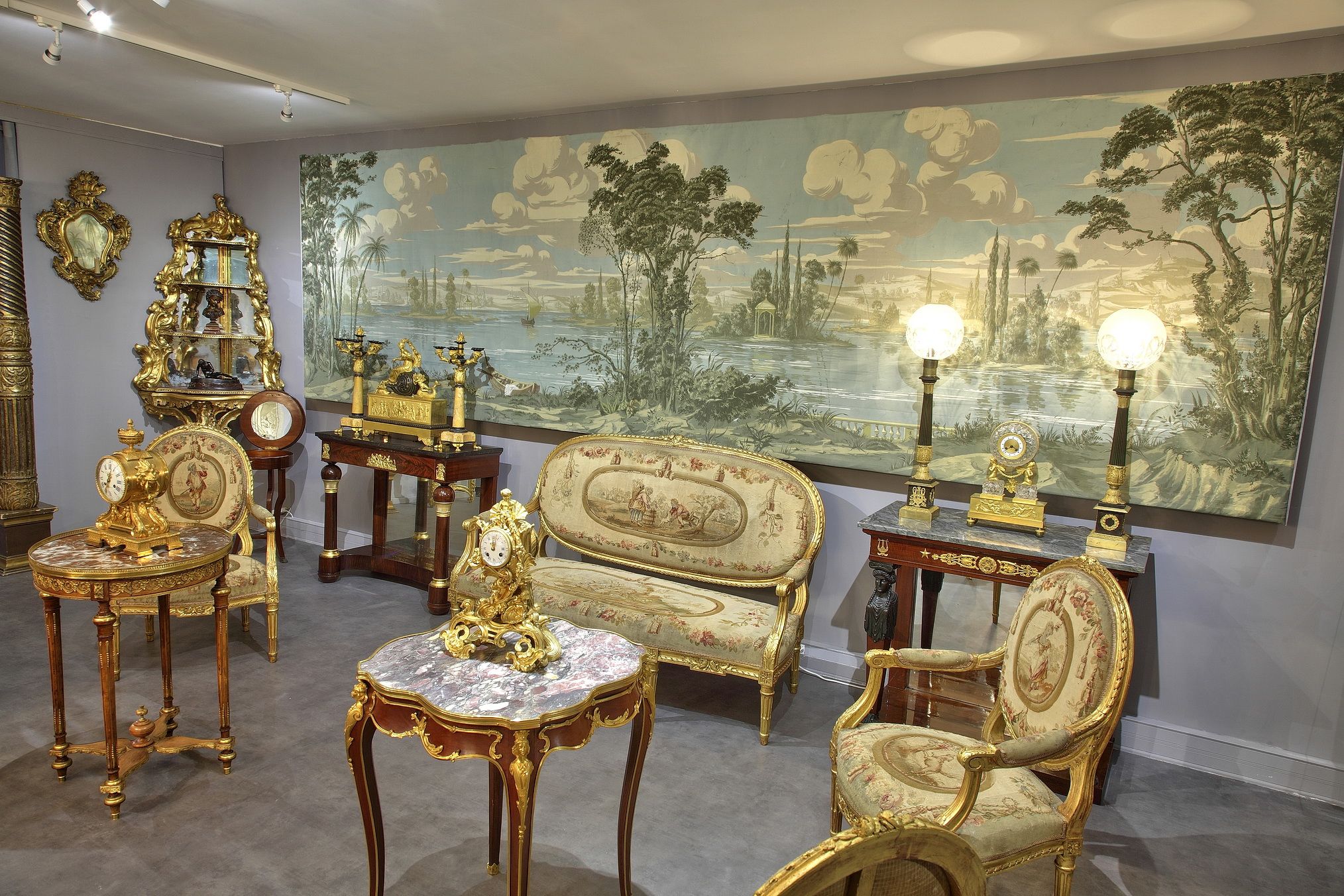Large format and history painting
In the 19th century, painters interpreted in large format everything that affected their time and ancient eras, from allegorical and mythological scenes to still lifes inspired by the great masters of yesteryear. These large-format paintings were exhibited at the Salon or used to decorate bourgeois homes. The large format is traditionally intended for history painting, the noble genre par excellence, and one of the foundations of academic teaching since the 17th century.
 Showroom view with Peace bringing Abundance surrounded by Soldant bandant un arc d'après Jacques Bousseau (1681-1740) and The Warrior by Auguste de Wever (1836-1910)
Showroom view with Peace bringing Abundance surrounded by Soldant bandant un arc d'après Jacques Bousseau (1681-1740) and The Warrior by Auguste de Wever (1836-1910)
At the Ecole des Beaux-Arts, technical training was complemented by theoretical courses, including history and archaeology. The subjects of the paintings submitted for the Prix de Rome in painting were drawn from classical history, mythology and the Bible, and the winners of the "Grand Prix de peinture" enjoyed successful careers and official honours. In addition to high salaries offered by wealthy benefactors of the official academic system, they also received official commissions.
 Georges Och, Journey of the Holy Family to Egypt, historical landscape, 1847. Salon of 1848.
Georges Och, Journey of the Holy Family to Egypt, historical landscape, 1847. Salon of 1848.
Particularly abundant in the first half of the 19th century, state commissions helped prolong the supremacy of historical subjects. Such was their popularity that we even speak of the "century of history".
The genre and decline of history painting
In the academic system, still lifes were relegated to the lowest order of artistic recognition. But the second half of the 19th century saw the academic hierarchy of genres disappear, as history painting evolved in a more intimate direction, opening up to the anecdotal and the picturesque. At the same time, the so-called "minor" genres came to the fore after 1848, when monumental representations of the peasant condition were seen for the first time in paintings by Millet and Courbet. Narrative scenes, then landscapes and still lifes , abandoned the small formats that had hitherto been reserved for them, and borrowed the large format, formerly devoted exclusively to ancient and biblical heroes.
Our two two-meter-high still lifes are inspired by the paintings of Gaspare dei Fiori (1667-1732), an Italian Baroque painter who specialized in rich floral compositions set against a landscape background. The canvases depict opulent garlands of flowers in a palette of bright, vivid colors. They reflect the historicist and eclectic taste of the Second Empire, when decor, furniture and works of art were inspired by Renaissance, 17th and 18th century styles.
The bouquets sprouting from the antique urns fit perfectly with the black lacquered furniture, with rocaille lines, richly decorated with polychrome floral motifs, of the Napoleon III living rooms. Indeed, the floral theme spread to the decoration of wallpaper, vases and furniture and became a typical element of bourgeois interiors.
 Large still life after Gaspare Lopez, known as Gaspare dei Fiori (1667-1732)
Large still life after Gaspare Lopez, known as Gaspare dei Fiori (1667-1732)
 Very large panoramic landscape in the style of the Romantic School, circa 1890
Very large panoramic landscape in the style of the Romantic School, circa 1890
By virtue of its size and the subject represented, this very large panoramic landscape in the taste of the Romantic School was probably designed as an interior decor. The idealized landscape, imbued with exoticism, is an invitation to travel and daydream. Romantic artists were attracted by faraway lands, which confronted them with a different kind of nature, sometimes uncontaminated by civilization.


